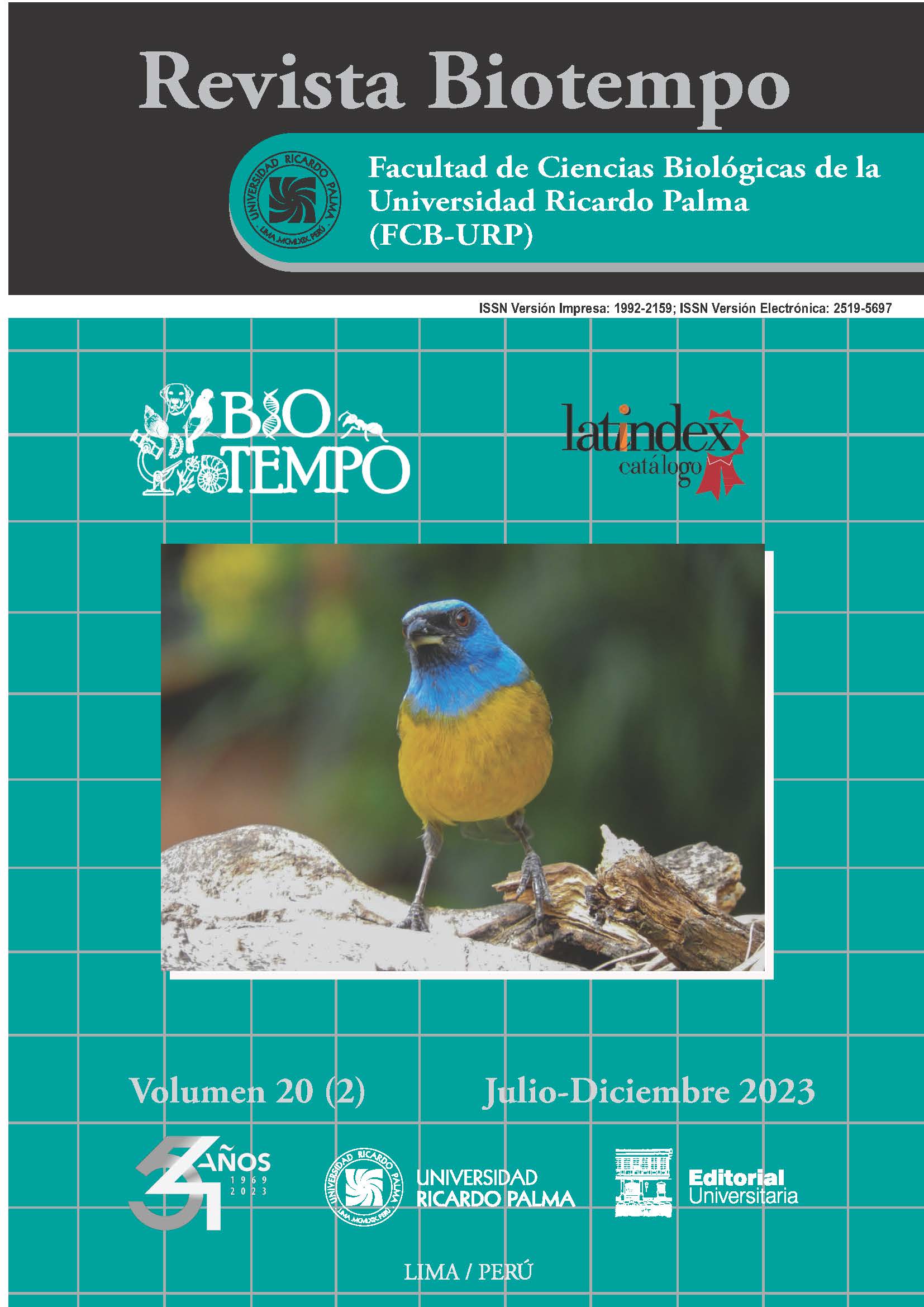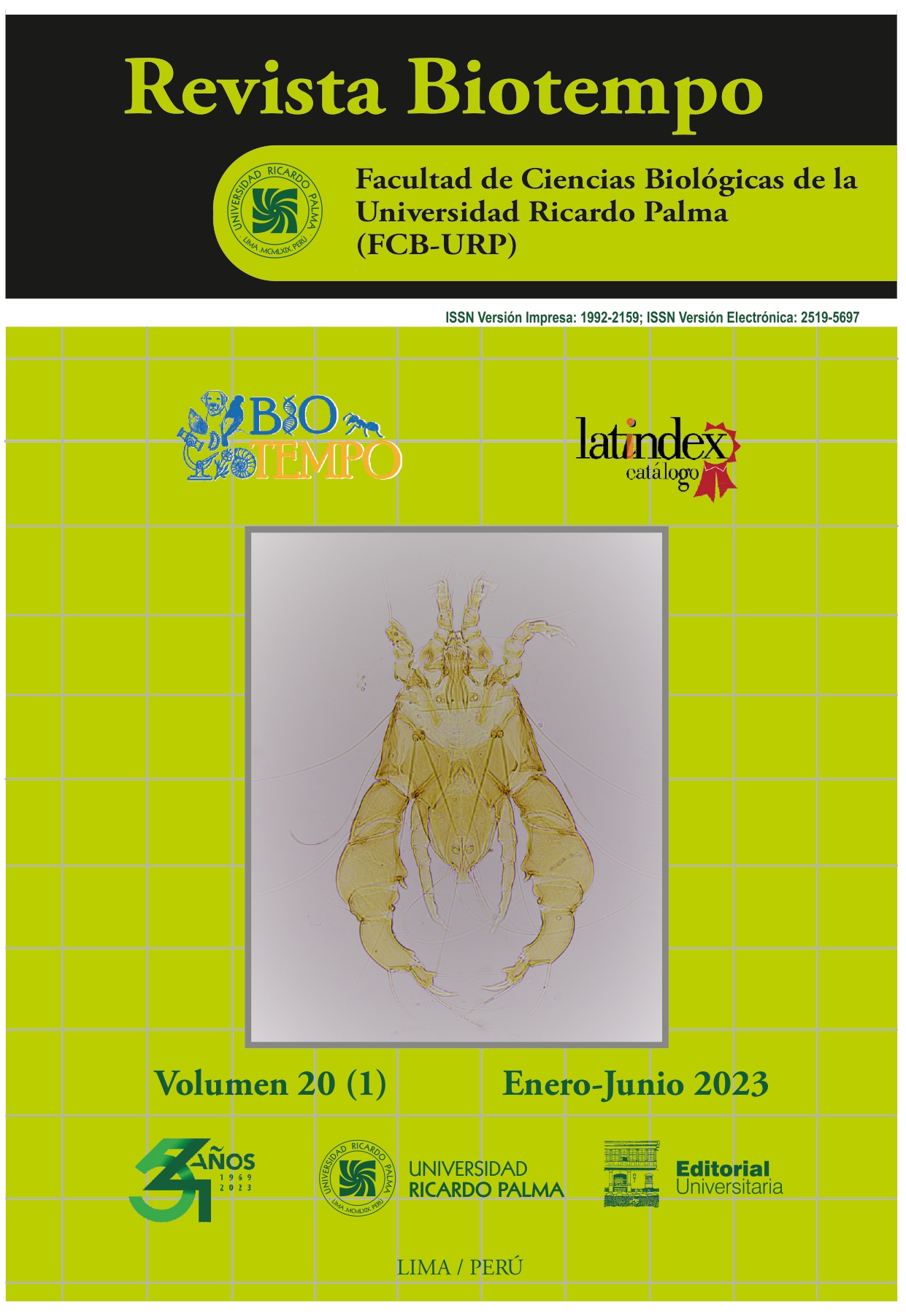Comportamiento reproductivo de Phleocryptes melanops (Vieillot, 1817) “Junquero” y Tachuris rubrigastra (Vieillot, 1817) “Sietecolores de la totora” (Passeriformes) y su relación con la vegetación en Pantanos de Villa, Lima, Perú
DOI:
https://doi.org/10.31381/biotempo.v20i2.6225Palabras clave:
aves, nidificación, Phleocryptes melanops, Tachuris rubrigastraResumen
Las aves son un grupo de importancia en la fauna del humedal del Refugio de Vida Silvestre Pantanos de Villa, Lima, Perú. Los Passeriformes especialistas de este humedal como el Junquero [Phleocryptes melanops (Vieillot, 1817)] y el Siete Colores de la Totora [Tachuris rubrigastra (Vieillot, 1817)], realizan sus nidos en la vegetación del humedal. Por ende, su reproducción y su relación con la vegetación fueron estudiados en esta investigación. Se buscaron nidos de ambas especies entre mayo a octubre del año 2022 en la laguna Génesis, y en la Laguna Mayor. Se realizó una descripción del comportamiento reproductivo en la incubación, polluelos, y en el éxito reproductivo, etc. En la vegetación se tomaron datos como la altura de la vegetación, la cobertura vegetal, las medidas del nido, altura del nido, número de hojas que sujetan el nido, entre otros. Mientras que, para el comportamiento parental, con ayuda de una cámara trampa por un nido se evaluó la cantidad de veces que los padres acudían al nido. Un total de 50 nidos fueron detectados para el período mayo – octubre 2022, 33 de P. melanops y 17 a T. rubrigastra. Para el “junquero” se encontraron entre 2-3 huevos en los nidos y su éxito de eclosión fue de 90,38%, los volantones tuvieron un éxito reproductivo de 93,6%, y las dimensiones aproximadas de los nidos tienen un promedio de 9,50 ± 3,48 cm. Para el “siete colores” se encontraron entre 2-3 huevos en los nidos y su éxito de eclosión fue de 86,36%, los volantones tuvieron un éxito reproductivo de 78,95%, y las dimensiones aproximadas de los nidos tienen un promedio de 14,2 ± 4,71 cm. Respecto a la relación entre los nidos y la vegetación, para T. rubrigastra no se obtuvieron asociaciones significativas; mientras que, para P. melanops solo existe una correlación negativa para la distancia de la base del nido al agua o altura del nido, y para medida de los nidos (alto x ancho), siendo los nidos con menor tamaño los que estarían a mayor altura. Para el caso del comportamiento reproductivo de P. melanops se tiene registro de un roedor introducido que depredó el nido, y para el caso de T. rubrigastra ambos padres realizan el cuidado parental con varias actividades cerca del nido.










